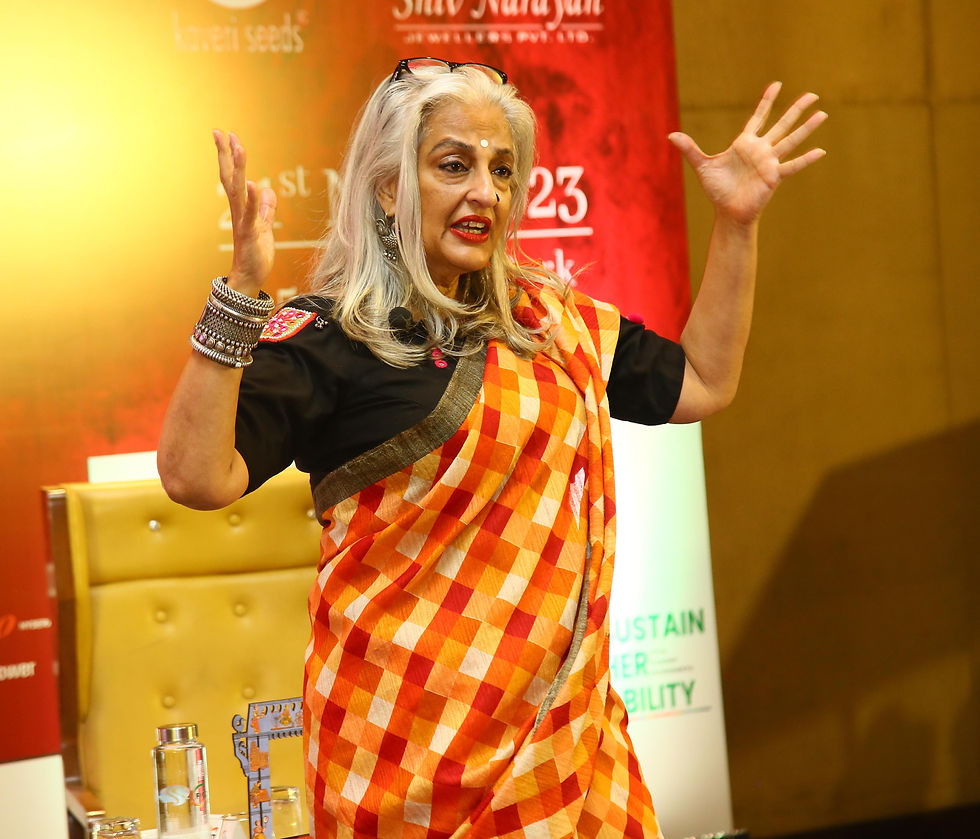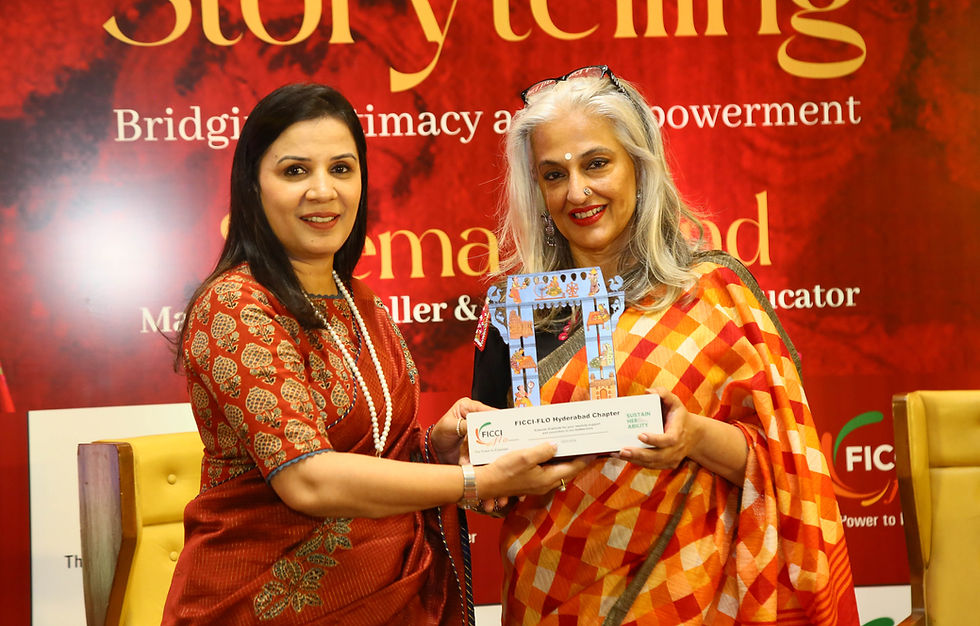Sex is like even if it is bad, it is good: London based Indian Sexual Health Educator, Seema Anand
- AimSolute Solutionist
- Nov 22, 2023
- 3 min read
The Kama Sutra, an ancient Indian text on sexuality, eroticism is the most exciting subject. I was introduced to it 23 years ago and I am still studying it said Seem Anand, a master storyteller, mythologist and sexual health educator.
She was addressing a hall full of women, the members of the FICCI Ladies Association (FLO) on Tuesday evening at the Park at Somajiguda.
She was in the city at the invitation of FLO for a session on The Art of Story Telling--Bridging Intimacy and Empowerment. After a brief initial talk, she was in conversation with Ritu Shah, the Chairperson of FLO
Giving her opening notes, Ritu Shah said, “Seema Anand breathes life into her stories. She is a master storyteller based out of London. Today she is with us to have a conversation on one of the rarest subjects of discussion in an open session like this”.
Though we have the oldest scriptures like the Kamasutra which is said to have been written in the 3rd BC, ‘sex’ is still discussed in hush…hush manner. Kamasutra is the most misunderstood literature. Now we have Seema Anand who has studied and researched it for over two decades to decipher it for us. Seema’s stories entertain, educate and inspire people, Ritu Shah said

‘My interest is erotic literature of ancient India’, Seema Anand announced as she started speaking.
The stories will define us. My interest arose in Kamasutra some 23 years ago. It is the most exciting subject. I am still enjoying studying it. My objective today is to foster safe and honest conversations and relationships of the subject we love to hate and hate to love, she said
Though India is the land of Kamasutra, many shy away from talking about sex. I will let you know some interesting stories from Kamasutra she announced and said that it is not a sex manual, nor about positions as perceived by the majority. It was written for rich men. It talks about the art of living well, the nature of love, maintaining it and aspects of the pleasure orientation of human life.
It has 7 chapters. The first chapter deals with general principles, the second on sexual union, the third on acquiring a wife, the fourth is about the duties and privileges of the wife, the fifth is about friends and family, the sixth on courtesans and the last chapter on practices. Out of these chapters what interests me the most is the second chapter on sexual union. It talks about both men and women. This chapter talks about sexual content, various sexual acts, embracing and kissing, grabbing etc she explained. Balance of the Universe lies in the pleasure of women, she said.
She asked why sex is considered a dirty word. Is it because every abuse or gali is centred around genitals? She questioned and said it shouldn’t be so. Sex is not a dirty word, she said.
Kamasutra is exciting to me because it talks about how lovers communicated when there was no WhatsApp messaging or text messaging. Women used to convey their love, and romance through paan (an Indian after-dinner treat). This is one of the many such things the book reveals, she informed.
Sex is like even if it is bad, it is good, she concluded her conversation.

The session was organized to dispel many myths. She is based out of London. She has a Ph. D in Narratology, the study of narrative and storytelling. She has been researching and teaching mythology, its relevance to contemporary life, and its impact on the psychology of relationships and sexuality. She is a prominent TEXs speaker.

Comments